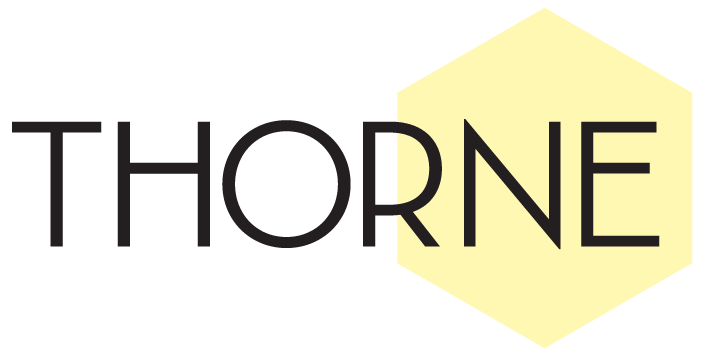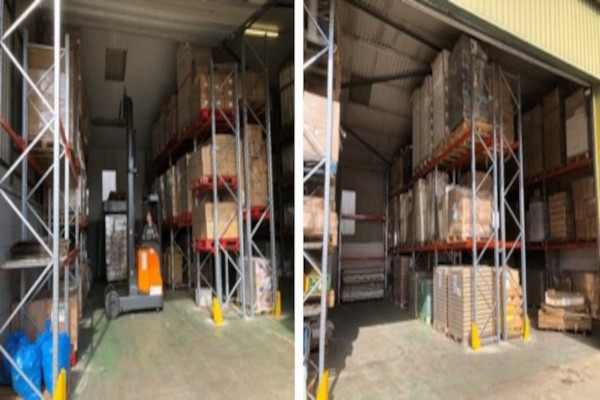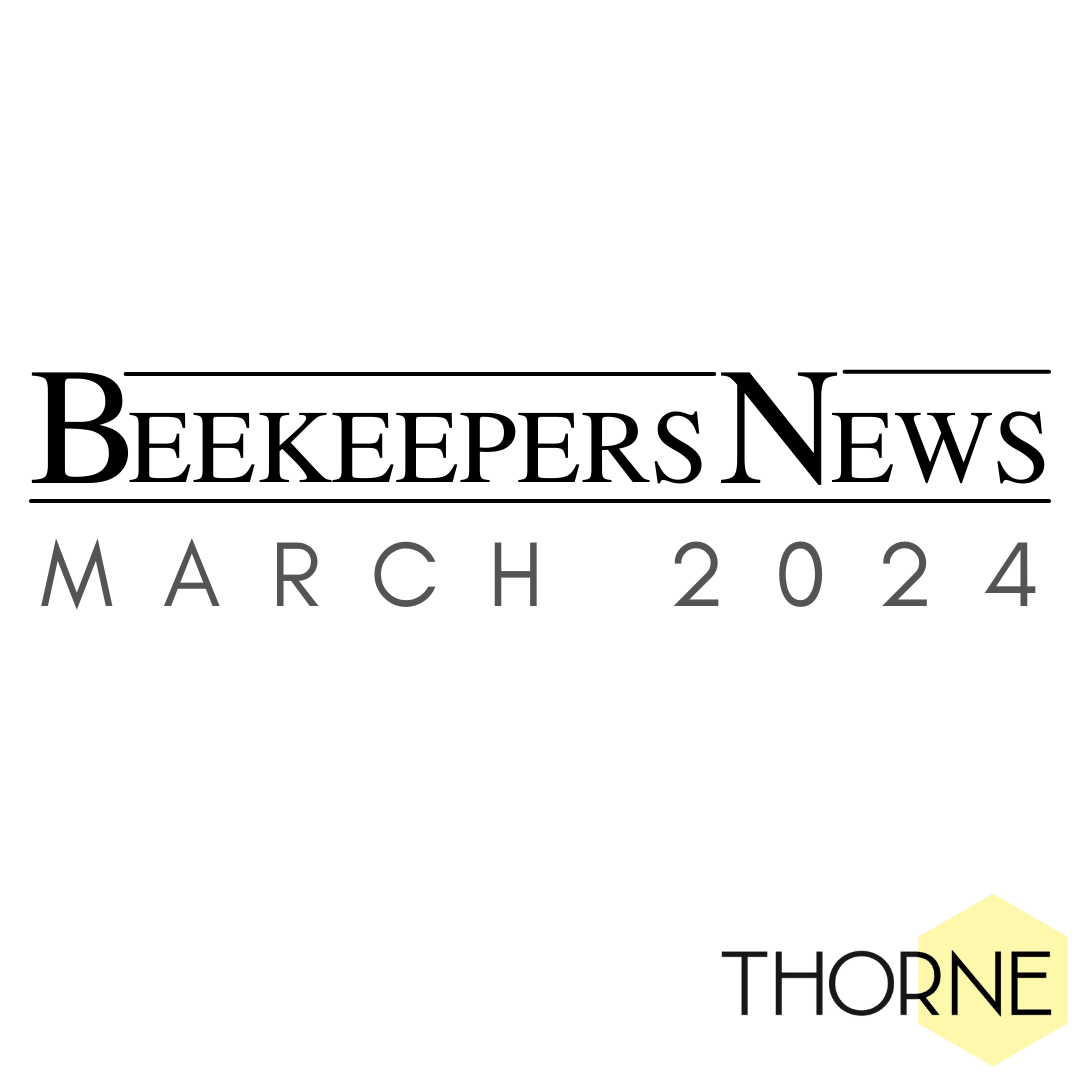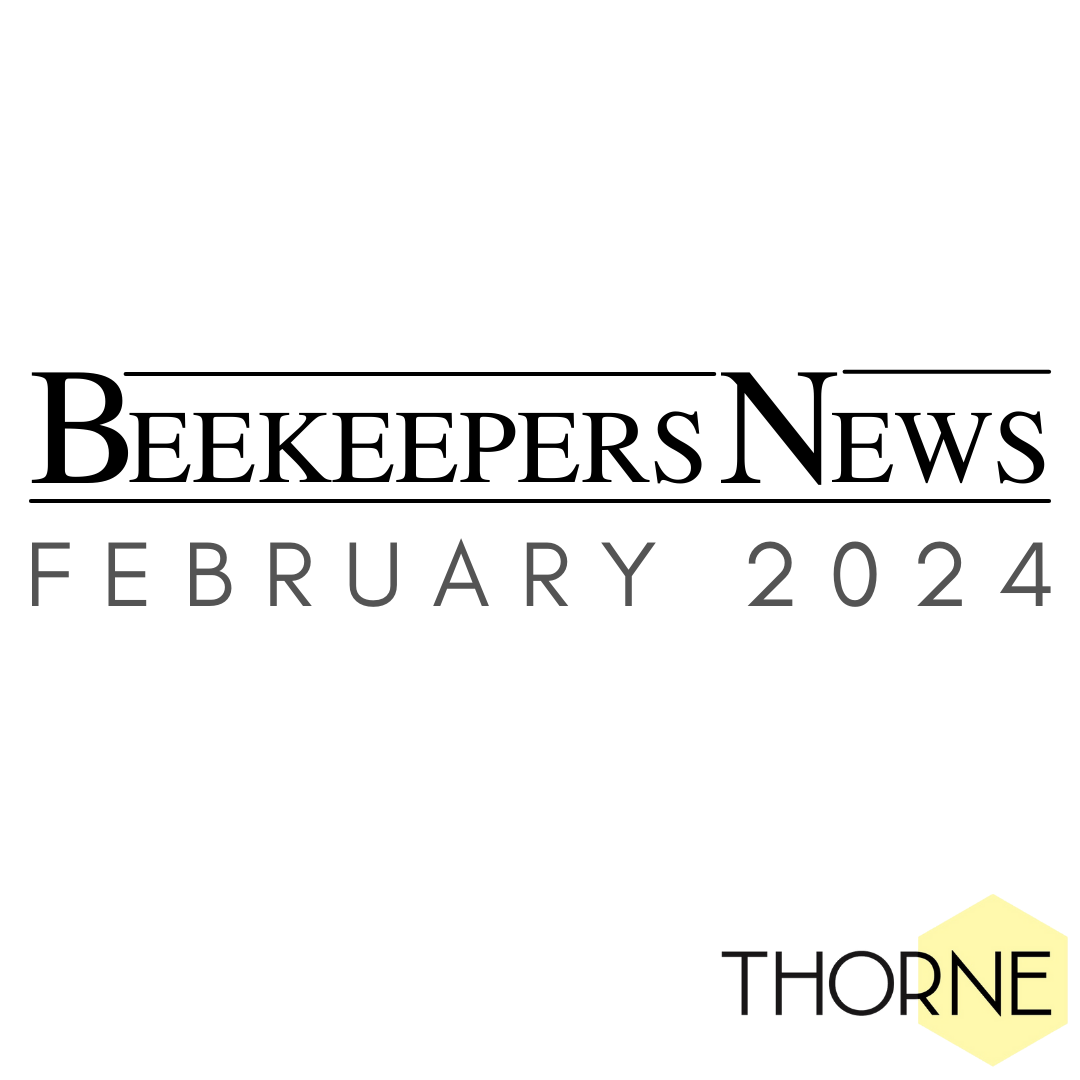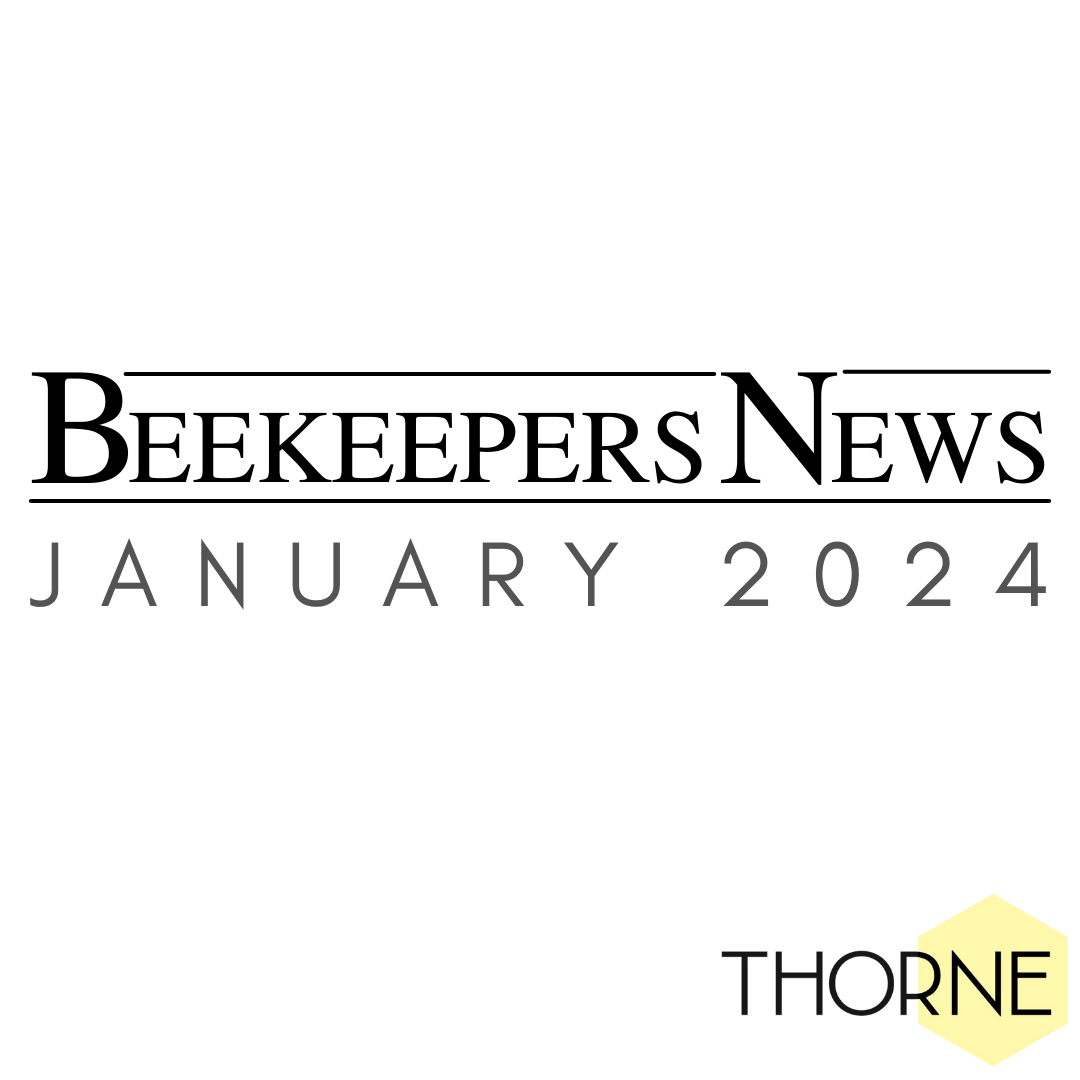September Roundup
What a different September to normal……. Windsor, Stockbridge and South Molton sale days all cancelled, and no Rand Open day to tidy up and prepare for. What a shame, and we have really missed seeing you at the branches, but the only decision that we could make in the circumstances.
Equipment ordered in the online sale was despatched and we are just finishing off the last few orders. Deliveries have taken longer to despatch than we hoped for. This was mainly because of the number of orders we received but also because we needed to ensure our staff safety and adhere by the social distancing guidelines. We even erected a couple of marquees outside and have had several people packing in the sunshine!
This month has seen a lot of improvements in the storage sheds. We have racked out the two main storage areas and have a reach forklift to make the most of all the space. A good job given the number of containers arriving recently! We have also greatly extended the woodyard. More pictures of this will follow soon.
The virtual National Honey Show will be held this month, starting on 22nd October, and we are delighted to be involved. A company video has been filmed – which should give you a taste of what we do here - and we have also decided to hold another short online/telephone sale. Our usual second quality hive parts and frames will be available plus a select number of first quality stock items will be discounted. We will have a special National Honey Show page on our website so look out for more details soon.
Those of you who order by phone may notice a change of personnel in the office. Molly has been with us for a few years but is now working in the office, and we have also been joined by Emily and Chelsea.
Finally, we are delighted to welcome Beth back to us from maternity leave after having baby Noah. Beth works in our quality control department and has certainly been missed. Belated congratulations Beth.

Ask the Expert
What exactly is a Top Bar Hive??
The Top Bar Hive is a beehive that uses, well, top bars. This means that unlike framed hives where the wax is enclosed from each edge by a wooden frame, the top bar hive literally just uses the top bar. People go for these hives if they are looking to keep bees in a way that is perhaps more natural for the bees. It is a long, horizontal shaped hive, much like a baby’s crib and the comb will be drawn out in a catenary shape, rather than in a rectangular shape, as it would with regular frames.
This is a popular hive in developing countries where beekeeping can be used as a source of income but where equipment is scarce. Top bar hives can be made from hollowed out tree trunks and kept relatively easily in there. It is more difficult to take honey off this type of hive than a standard framed hive as the comb that the bees draw out is natural and therefore unwired. This can make the combs precarious and floppy. It can also make inspections difficult as the wax can break away from the top bar. The added complication of not having a queen excluder means that the queen can lay eggs wherever she wants to, so removing frames that contain just honey is unlikely. Having said that, if your colony is strong, you should be able to find one or two top bars just with honey in on the outer edges. If you did manage to take off some combs of honey, you would have to press it out of the wax as you would not be able to extract it in the usual way using an extractor. Alternatively, you could leave it in the comb and use it as cut comb – delicious!
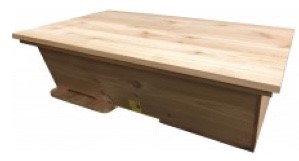
On the flip side, if you are a beekeeper that is not looking to take honey off the colony, the top bar hive is an interesting way to keep bees as you can observe the amazing way that bees naturally build their comb. Plus, you should still be able to perform many of the tasks that a beekeeper has to carry out, for example treating for varroa.
Our top bar hives come ready assembled and are made from sustainably sourced British cedar. They come with 24 top bars and a leaflet about beekeeping with top bar hives. £10 for every hive sold is donated to Bees for Development. We would also recommend the book ‘Why not top bar hives’. An assembled top bar hive costs £162.
Equipment Focus…
We are pleased to say our popular bain maries are now back in stock – with a twist!! We now have two different sizes. The smaller model holds 1.5kg of wax and costs £17.50. The larger holds 2.5kg of wax and costs £22.50. The easy pour body of the bain marie means melting and pouring wax is a dream.
Both sizes are suitable for gas rings, electric hobs, induction hobs and agas.
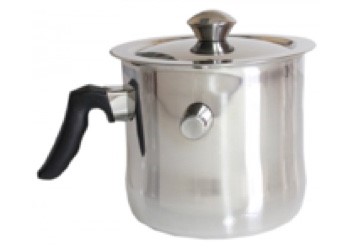
We are also delighted to introduce our new brass cone escapes and name plates. All assembled brood bodies and WBC lifts with porch will come with a name plate fitted as standard. All our flat packed hives will also come with a name plate and, if the hive has a gabled roof, two of the brass cone escapes.
We are also selling the name plates and escapes separately.
Two brass cone escapes and a name plate with all fixings cost £5.00
Two brass cone escapes and fixings cost £4.50
Brass name plate and fixings costs 70p
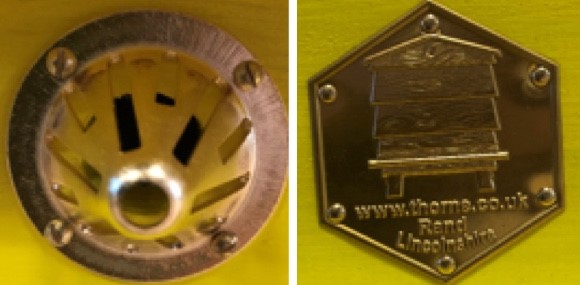
Beekeeping Blog
September 2020
As the active beekeeping season comes gradually to an end, we have been using this time to get the bees prepared for winter. This has included lots of feeding to make sure they have enough stores to keep them going through the cold months. We have used mostly English feeders as these fit quite a lot of syrup in, and we have also used a number of contact feeders. With the English feeders we tend to find that the bees build a bit of brace comb up in the cup, as you can see in this picture:
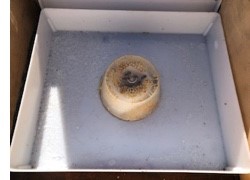
So, before refilling the feeder, we make sure to scrape the wax off in order to clear the hole. Then we let the bees come up for a while to clear out the remaining syrup in the bottom of the feeder. They can’t drown if they have taken most of the syrup and it is a good way to get the feeder cleaned up.
The apiary has had a haircut this month as the wildflowers have now been cut back. The flowers had gone over and will be back next summer. We are also in the process of organising a new apiary as Thornes have cleared another huge area for us where we will be moving some of these bees. There will also be another wildflower field planted so that is something new to look forward to next year.

Finally, one of the most exciting things we have done this month is to try out the Carbon Dioxide Varroa Tester. This tests a small amount of bees in a colony for varroa mites and depending on how many mites you find, gives an indication of the varroa level in the colony and whether you need to treat them. What we liked about this tester is that the bees are not killed, they are only knocked out for a short while and once they come back round, can be popped straight back into the hive. We found it a very easy test to do, with minimal equipment necessary and it didn’t demand lots of time either. The first picture below shows the bees when they have been knocked out. This is the stage where the varroa mites fall off the bees and through the holes to be counted. The second picture shows the bees coming back round and starting to crawl up the sides of the container.
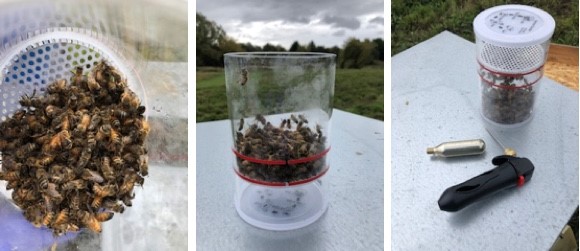
From the tests we did, the colonies showed very low levels of varroa but we have the advantage of being able to treat year round here as we concentrate on bee production rather than honey production. Next month we will be looking forward to the year ahead and doing some planning. This will involve looking back at this year, deciding on what worked well and what didn’t. There is always something to improve on!
Bees for Development Update
We are pleased to report that we have made good progress in projects to bring beekeeping to communities in need of sustainable income. This is not to say that our work has been unaffected by restrictions, or that people are not suffering more due to the effects of Covid on society. However, our projects with partners working locally in Ethiopia, Ghana and Uganda continue.
Christmas is coming, and several gift items are available by mail order from the Bees for Development Shop. Choose from a new range of t-shirts, jewellery and beeswax items, which can be delivered to your, or to a friend's or relative's address. In the UK, we are also still running our Courses in skep making, sustainable livelihoods, and other topics. Visit our web shop for details and to book, or call us on 01600 714848.
National Honey Show
The National Honey Show Virtual event is taking shape with brilliant lectures, demonstrations and additional interesting presentations and events. Do share with your interested friends and colleagues the invitation to attend, free of charge, to any or all parts of the show.
Check out the snippets on Facebook showcasing various facets of the show from our enthusiastic supporters and again, share them around, together with the invitation to attend. Visit our website for latest information.
From Monday 12th October there will be details on registration for the event, and then ..... not long until we meet together again, this year, on line. Not long now: Thursday 22nd to Saturday 24th October. http://www.honeyshow.co.uk
